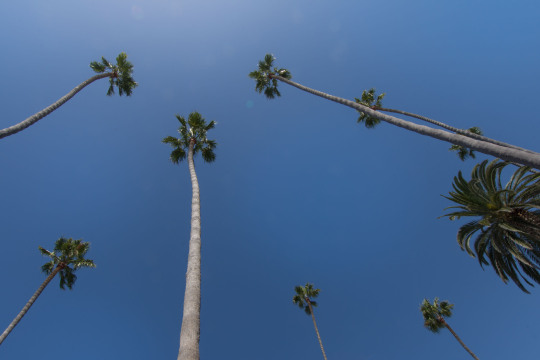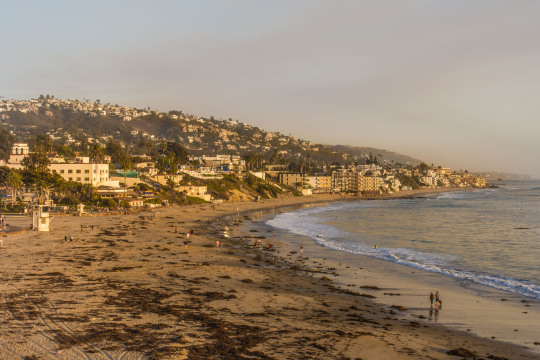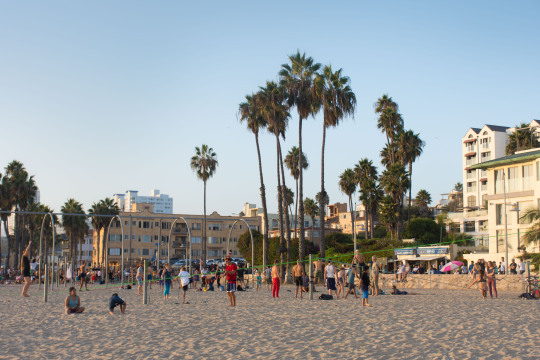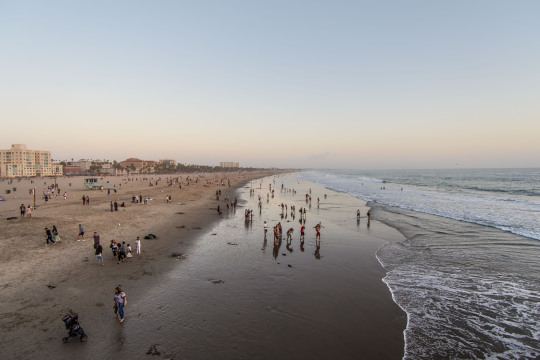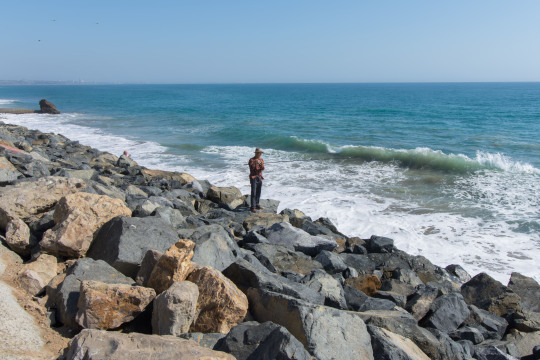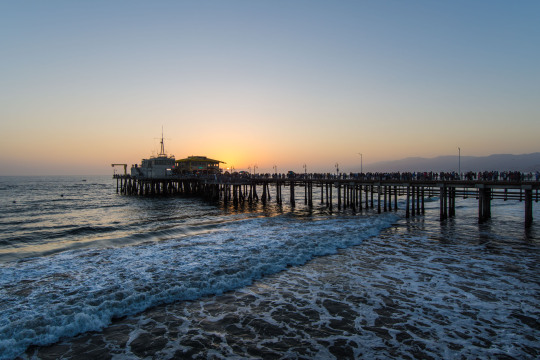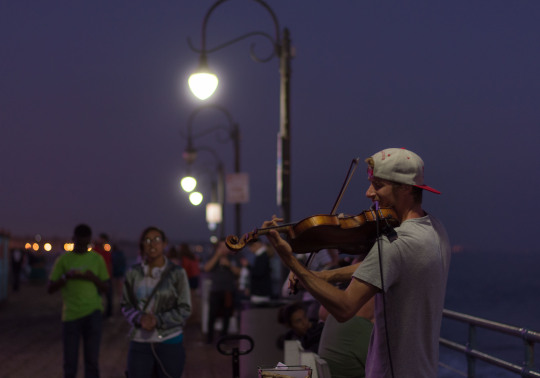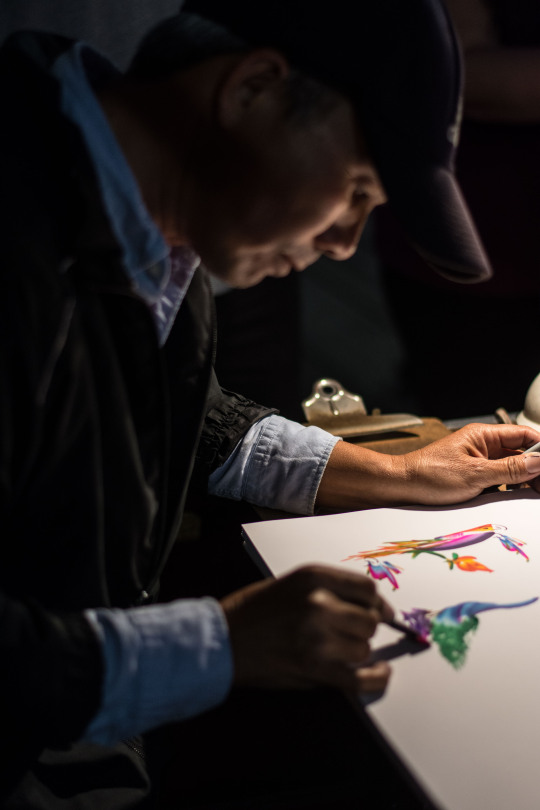Text

“We Were Here First.” An eco art installation on now until the rain washes me away or a human destroys me.
You will find me nestled between a bench and a lake at 🍒 Beach.
5 notes
·
View notes
Text










“Intersections: Threads of Tradition and Identity.”
Cloverdale Mall, Arts Etobicoke.
On view until September 21st, 2024
4 notes
·
View notes
Text
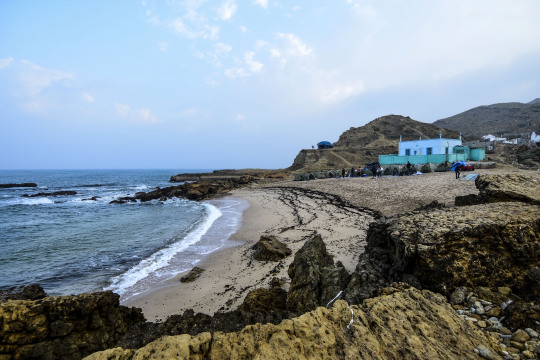

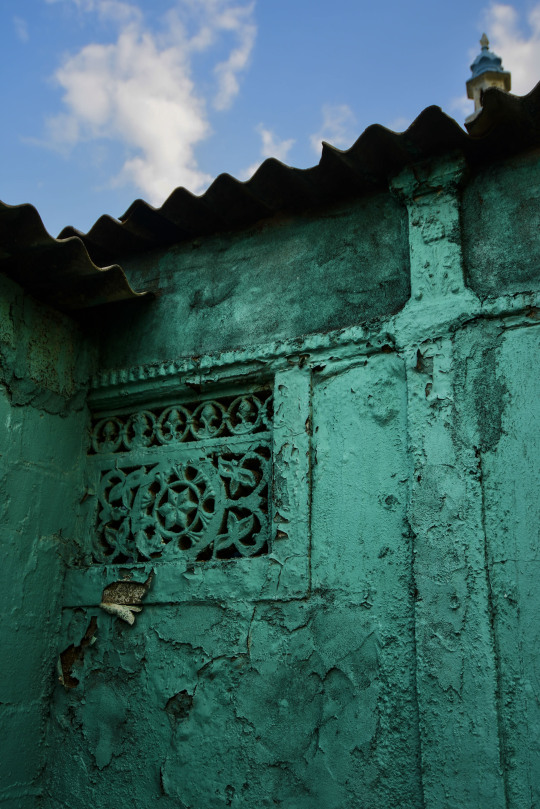

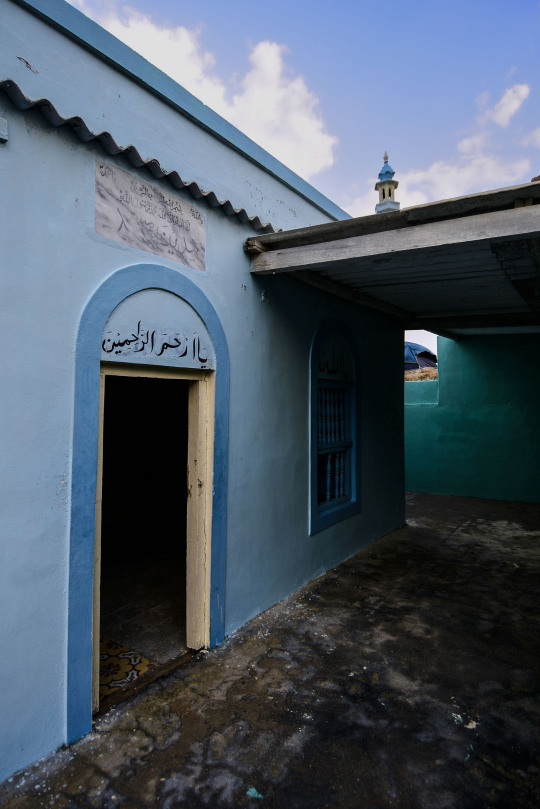


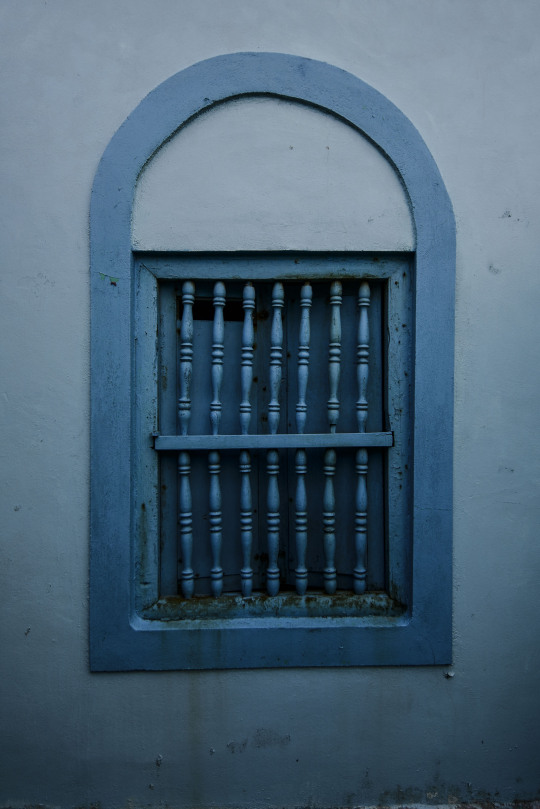






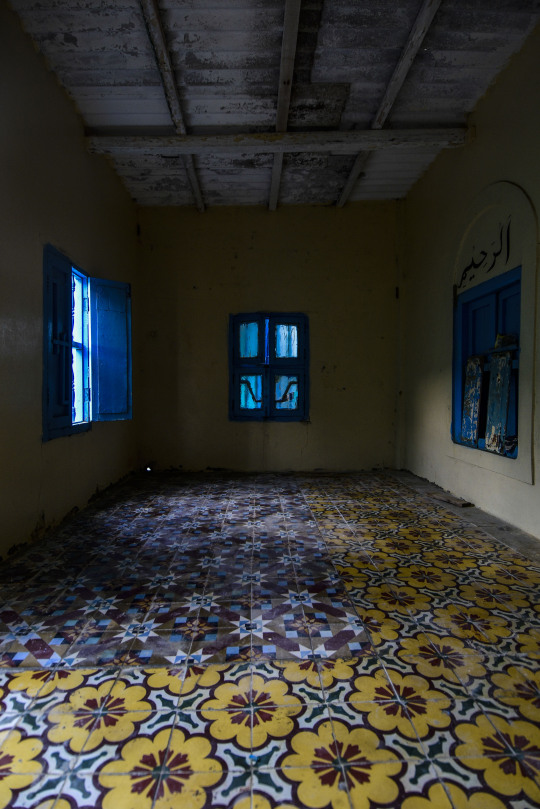
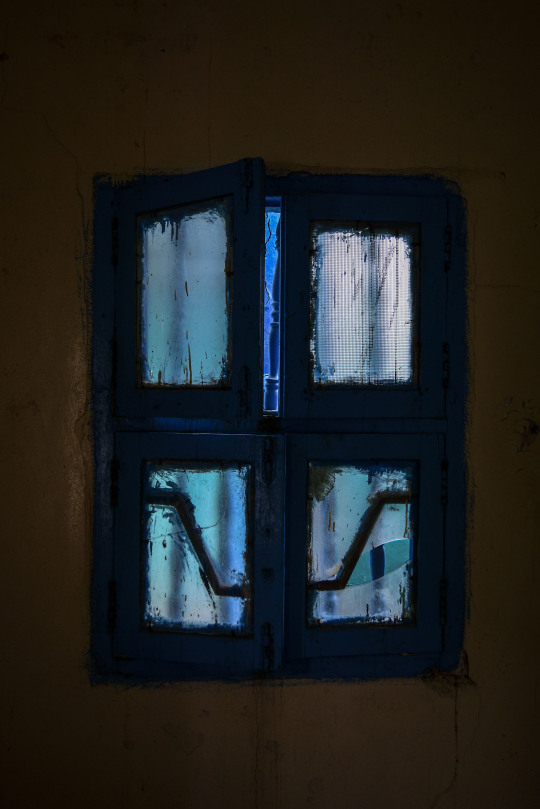
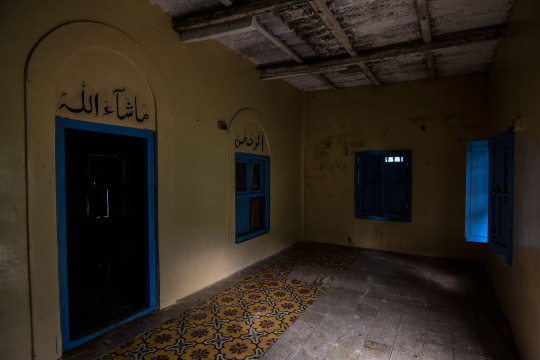

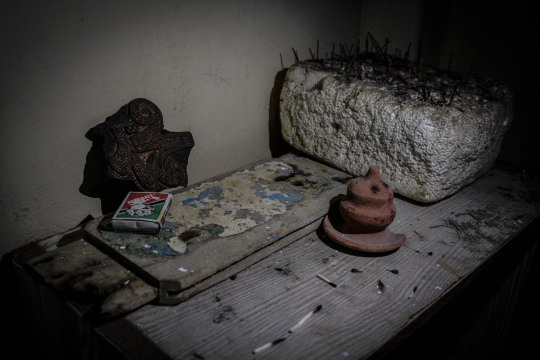

Echoes in the Abyss...
It was an unusually brisk morning when my beloved and I decided to venture into Bhit Khori, a once-thriving fishing village now surrendered to the sands of time. The deserted pathways led us to the skeletal remains of houses and boats, their stories lost to the wind. Amidst this desolate beauty, our curiosity was drawn to a haunting silhouette against the sky—an abandoned mosque.
The mosque stood solitary, its doors shut but not sealed, as if guarding the secrets of ages. Despite the eerie silence that hugged the air, our adventurous spirits couldn't resist the pull of the unknown. We pushed open the door, the wood groaning under years of neglect. Inside, the air was thick with the scent of dust and forgotten prayers.
One room led to another, each door heavier than the last, opening with a reluctant creak that echoed through the empty halls. As we delved deeper into the mosque, a startling sound broke the silence—three sharp knocks, resonating from a metallic surface. I turned, expecting to see my husband playing a trick, but the confusion in his eyes mirrored my own.
Before we could discuss it, the silence once more settled like a dense fog around us. Then, as if summoned by our presence, the knocks came again—three loud, deliberate bangs. This time, my husband stood clearly before me, his hands visibly still. The sound sliced through the stillness, leaving a trail of cold air in its wake.
We exchanged looks, a mix of fear and fascination. The knocks seemed almost like a communication—a warning, or perhaps an invitation. Compelled by a mix of dread and intrigue, we approached the final barrier, the last door that stood defiantly closed against us.
With a shared breath, we pushed it open. Darkness greeted us, thick and enveloping, swallowing the meager light from the doorway. A cold gust of wind rushed past, carrying with it a faint, almost inaudible whisper. The room was empty, save for the shadows that seemed to flicker and dance on the walls.
As our eyes adjusted, the stark emptiness became more apparent. The room felt suspended in time, a vacuum so profound that even the distant roar of the sea was silenced within its walls. We stood there, on the threshold between the known and the unknown, our hearts racing with the thrill of the unearthly encounter.
The mosque, with its closed doors and ghostly whispers, seemed to hold a narrative lost to the living, a story untold but felt in the chill of the unseen and the echo of unclaimed knocks. Was it merely the wind, or had we stumbled upon something far more ancient and mysterious, calling out from the depths of its sanctum?
As we left the mosque, the air seemed to tighten around us, as if reluctant to let go. The experience lingered with us, a haunting melody of questions without answers. Our visit to Bhit Khori was supposed to be an escape into nature, but it turned into a dance with the supernatural, leaving us to wonder if some doors, especially those guarded by the spirits of the past, are better left closed.
Back in the comfort of our home, the knocks still echo in my mind, a ghostly drumbeat that refuses to fade. What did they signify? Who, or what, was reaching out from the other side? These questions haunt me still, a chilling reminder of our eerie adventure into the spectral heart of Bhit Khori.
Images + Text: © Mariam Magsi 2024
7 notes
·
View notes
Text




Burning the midnight oil with some block-printing. I brought these blocks straight from bazaars in Karachi, Pakistan and they're creating some stunning designs on old totes, shirts and pants.
2 notes
·
View notes
Text


Nature studies on my balcony.
3 notes
·
View notes
Text

Food is our love language//Nuit Blance, Toronto!
Eat More Scarborough + Scarborough Arts: We're excited to welcome Gordan Sumanski to our upcoming night food tour to give an artist talk titled "Food is Our Love Language"! Gordan Sumanski, is a Serbian-Canadian digital art and content creator with a deep-rooted passion for food and travel. Hailing from a family with a rich history in the food industry, he effortlessly blends tradition with innovation. Gordan’s creativity in the kitchen knows no bounds, crafting diverse dishes that are not only delicious but also visually captivating.
Join us on the upcoming night food tour https://www.eventcreate.com/e/nuit-blanche-night-tour
#scarborough#nuit blanche#toronto#canada#ontario#food#love language#gordansumanski#artists on tumblr
2 notes
·
View notes
Text








Cultural Appreciation
Cultural appropriation refers to the adoption or use of elements of one culture by members of another culture, typically without understanding, respect, or appropriate context. This is problematic especially when the dominant culture uses elements from a culture of people who have been marginalized or oppressed. Cultural appropriation can perpetuate stereotypes, disrespect sacred traditions, and trivialize meaningful practices.
Cultural appreciation is when someone seeks to understand and learn about another culture in an effort to broaden their perspective and connect with others cross-culturally. It's characterized by genuine interest, respect, and a desire to understand rather than to mimic or reduce the culture to a mere trend.
For instance, if someone studies the history, significance, and technique behind Japanese martial arts practices, and the various weapons, arms and armour incorporated within physical technique, with reverence and understanding, this can be seen as appreciation.
I dedicate more than 12 hours in a week to solidifying my research, while consulting key stakeholders from within the community, under the strict guidance and supervision of world renowned Senseis. My ongoing research is further supplemented with consultations with historians at some of the most renowned institutions in North America with entire departments dedicated to Japanese arms and armour while also maintaining close ties with the Japanese Cultural Centre of Canada. It is very important to me to ensure that I am not perpetuating harm on the communities and cultures I am learning from.
Cultural appreciation vs. cultural appropriation: one stems from a place of respect, understanding, and admiration; the other from ignorance and exploitation. Let's always strive to celebrate cultures by learning, respecting, and acknowledging their origins.
4 notes
·
View notes
Text
youtube
Dawat-e-Biryani
Dawat Yan Banquet is proud to present Dawat-e-Biryani, a collaboration between Mariam Magsi and her beloved, Gordan Sumanski. Biryani has the ability to bring people together. The yield is large, enough to satisfy all that partake in the eating of this layered, complex, historical and dynamic rice-based dish. Biryani is enjoyed in a variety of unique ways. In some parts of South Asia, like in the Sindh province of Pakistan, it is consumed with potatoes, while in other parts of the continent, such as South of India, it is eaten with eggs. Depending on the area, community, province and even family, within Pakistan itself, Biryani is created and consumed in many diverse ways and there are many healthy rivalries and culinary competitions amongst varying communities, about whose is the most authentic.
Within one Pakistani household, some members of the family may enjoy plums in their Biryani while others forego the dried fruit. Some folks like it plain, while others drown their Biryani in Raita (yogurt with cucumber). Some people eat it with their hands, while others prefer to cradle the colourful grains of rice with spoons and forks. Some like it sweet and spicy, and may even mix Zarda (a vibrant, colourful, sweet rice-based dish) with their Biryani, while others find the sweet and savoury mix to be an absolute abomination.
One aspect that qualifies Biryani for the Dawat Yan Banquet is the dish’s unique ability to unite people from all backgrounds, in feast, and in community, making the basis for the Dawat Yan Banquet. The food is inclusive, historical, and has connections to the Old Silk Road. Regional variations have all the common elements, the cause and effects of historical trading, and colonialism in the South East Asian subcontinent. Biryani brings a unique perspective to Dawat Yan, making the viewer question borders, race, culture and authenticity.
Dawat Yan Banquet is virtually hosted by Eric Chengyang and Mariam Magsi between the months of February and April, as part of the Art Gallery of Ontario's AGOxRBC Artist in Residence program, 2022. The Dawat Yan Banquet is part of Dawat Yan Project: dawatyanproject.tumblr.com - Visit the blog for archives, audio+video interviews, recipes, historical food tours, poetry and more.
Video Credits-:
Featuring: Gordan Sumanski Videography: Mariam Magsi Audio + Video Editing: Mariam Magsi
Audio Credits-:
Poetry: Adeen Taji aka Mohtarma Rubina Magsi Vocalist: Ustad Ghulam Abbas Album: Thehriye Production Studio: Saregama, 2017
Location: Toronto, Canada Archives derived from the Magsi family in Karachi, Pakistan
#dawatyanproject#gordansumanski#mariammagsi#toronto#pakistan#karachi#sindh#biryani#food#love language#Youtube
3 notes
·
View notes
